第390章
He also encompassed the entire temple with very large cloisters, contriving them to be in a due proportion thereto; and he laid out larger sums of money upon them than had been done before him, till it seemed that no one else had so greatly adorned the temple as he had done.There was a large wall to both the cloisters, which wall was itself the most prodigious work that was ever heard of by man.The hill was a rocky ascent, that declined by degrees towards the east parts of the city, till it came to an elevated level.This hill it was which Solomon, who was the first of our kings, by Divine revelation, encompassed with a wall; it was of excellent workmanship upwards, and round the top of it.He also built a wall below, beginning at the bottom, which was encompassed by a deep valley; and at the south side he laid rocks together, and bound them one to another with lead, and included some of the inner parts, till it proceeded to a great height, and till both the largeness of the square edifice and its altitude were immense, and till the vastness of the stones in the front were plainly visible on the outside, yet so that the inward parts were fastened together with iron, and preserved the joints immovable for all future times.When this work [for the foundation] was done in this manner, and joined together as part of the hill itself to the very top of it, he wrought it all into one outward surface, and filled up the hollow places which were about the wall, and made it a level on the external upper surface, and a smooth level also.This hill was walled all round, and in compass four furlongs, [the distance of] each angle containing in length a furlong: but within this wall, and on the very top of all, there ran another wall of stone also, having, on the east quarter, a double cloister, of the same length with the wall; in the midst of which was the temple itself.This cloister looked to the gates of the temple; and it had been adorned by many kings in former times; and round about the entire temple were fixed the spoils taken from barbarous nations; all these had been dedicated to the temple by Herod, with the addition of those he had taken from the Arabians.
4.Now on the north side [of the temple] was built a citadel, whose walls were square, and strong, and of extraordinary firmness.This citadel was built by the kings of the Asamonean race, who were also high priests before Herod, and they called it the Tower, in which were reposited the vestments of the high priest, which the high priest only put on at the time when he was to offer sacrifice.These vestments king Herod kept in that place; and after his death they were under the power of the Romans, until the time of Tiberius Caesar; under whose reign Vitellius, the president of Syria, when he once came to Jerusalem, and had been most magnificently received by the multitude, he had a mind to make them some requital for the kindness they had shewn him; so, upon their petition to have those holy vestments in their own power, he wrote about them to Tiberius Caesar, who granted his request: and this their power over the sacerdotal vestments continued with the Jews till the death of king Agrippa; but after that, Cassius Longinus, who was president of Syria, and Cuspius Fadus, who was procurator of Judea, enjoined the Jews to reposit those vestments in the tower of Antonia, for that they ought to have them in their power, as they formerly had.However, the Jews sent ambassadors to Claudius Caesar, to intercede with him for them; upon whose coming, king Agrippa, junior, being then at Rome, asked for and obtained the power over them from the emperor, who gave command to Vitellius, who was then commander in Syria, to give it them accordingly.
Before that time they were kept under the seal of the high priest, and of the treasurers of the temple; which treasurers, the day before a festival, went up to the Roman captain of the temple guards, and viewed their own seal, and received the vestments; and again, when the festival was over, they brought it to the same place, and showed the captain of the temple guards their seal, which corresponded with his seal, and reposited them there.And that these things were so, the afflictions that happened to us afterwards [about them] are sufficient evidence.
But for the tower itself, when Herod the king of the Jews had fortified it more firmly than before, in order to secure and guard the temple, he gratified Antonius, who was his friend, and the Roman ruler, and then gave it the name of the Tower of Antonia.